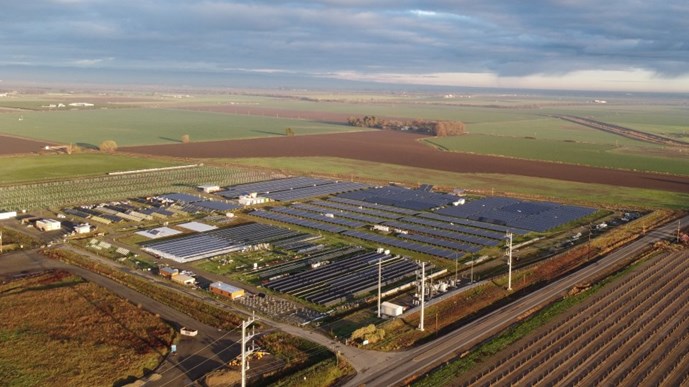Explore PVEL’s Testing at Historic PVUSA
Driving north through Davis, California today you might stumble upon a solar site unlike any other, with rows of different kinds of solar photovoltaic module types and assorted tracking technologies spread across an 86-acre test field. This purpose-built testbed was originally founded in 1986 and named the Photovoltaics for Utility-Scale Applications research site, or PVUSA.
PVUSA is one of the first solar plants built in North America, and currently serves as the home of grid-connected, research-grade outdoor testbed operated by PV Evolutions Labs (PVEL), a member of the Kiwa Group.
The ongoing research at PVUSA is part of a long history of solar development in the United States. As the leading independent lab of the downstream solar industry, PVEL conducts testing to help validate the reliability and performance of solar products. Developers, asset owners, and investors leverage PVEL’s data and services to mitigate technology risk in solar and storage projects. At the PVUSA site, solar technologies are tested in a unique environment for assessing real-world performance and operation.
A Historic Facility
Back in 1986, a PV module cost about 9.40 USD/watt. President Reagan dismantled the solar array on the White House. Solar PV technology was unproven commercially and its outlook was uncertain, to say the least. But in Davis, California, a dedicated team of scientists was beginning to a develop a research site that helped transform solar PV into a scalable technology – what would later become PVUSA.
By the time PVEL started testing at PVUSA in 2011, the cost of a PV module had dropped to just 1.39 USD/watt and more than 30 GW of solar was installed worldwide. Over the past decade, the expansion of solar power has continued to skyrocket. Clearly, many different factors have contributed to this growth, but the work conducted at PVUSA played an important part.
PVUSA was developed by the utility company PG&E as a public-private partnership to study the impact of high-penetration solar on the electric grid. At the time of construction, it was one of the only grid-connected solar projects in the world. Many utilities were skeptical of solar energy products. There was no consensus on the relative merits of different photovoltaic technologies, installation methods or O&M techniques.
However, over time other organizations saw untapped potential in solar energy and lent their support to the project, including the U.S. Department of Energy (DOE) and California Energy Commission. PVUSA eventually helped utilities understand the impact of solar power on the grid and led to the development of net energy metering. It also served as a proving ground for solar PV technology.

Photovoltaics for Utility-Scale Applications research site (PVUSA)
Setting Industry Standards
According to a PV-USA report from 1993, the project was “designed to narrow the gap between a large utility industry that is unfamiliar with PV, and a small PV industry that is aware of a potentially large utility market but unfamiliar with how to meet its requirements. The objectives are:
- To evaluate the performance, reliability and cost of promising PV modules and balance-of-system (BOS) components side-by-side at a single location
- To assess PV system operation and maintenance (O&M) in a utility setting
- To provide U.S. utilities with hands-on experience in designing, procuring, and operating PV systems”
The original PVUSA projects proved so influential that their legacy can be seen in the technical specifications of PV modules: the “P” in PTC rating refers to PVUSA test conditions. PTC ratings are intended to be a more realistic measure of PV module output in central California than ratings at STC, or standard test conditions. As a report issued in 1990 notes, “PVUSA’s suppliers have tended to be optimistic with regard to project array efficiency.” Since then, energy predictions have continued to evolve and today PVEL’s PAN files and IAM profiles are regularly required to develop bankable energy assessments.
The Legacy Continues with PVEL
Solar products and solar project development have certainly come a long way since the early days of PVUSA. Yet building investor and asset owner confidence in the benefits of a new technology still requires the right combination of data from both the lab and the field.
Solar products operate under the sun in the real world, a microcosm of which was created at PVUSA by solar industry pioneers and leaders. PVEL is honored to continue the legacy of PVUSA by testing the latest solar technologies today.
To find out more about field testing at PVUSA, contact PVEL’s business development team: info@pvel.com.



